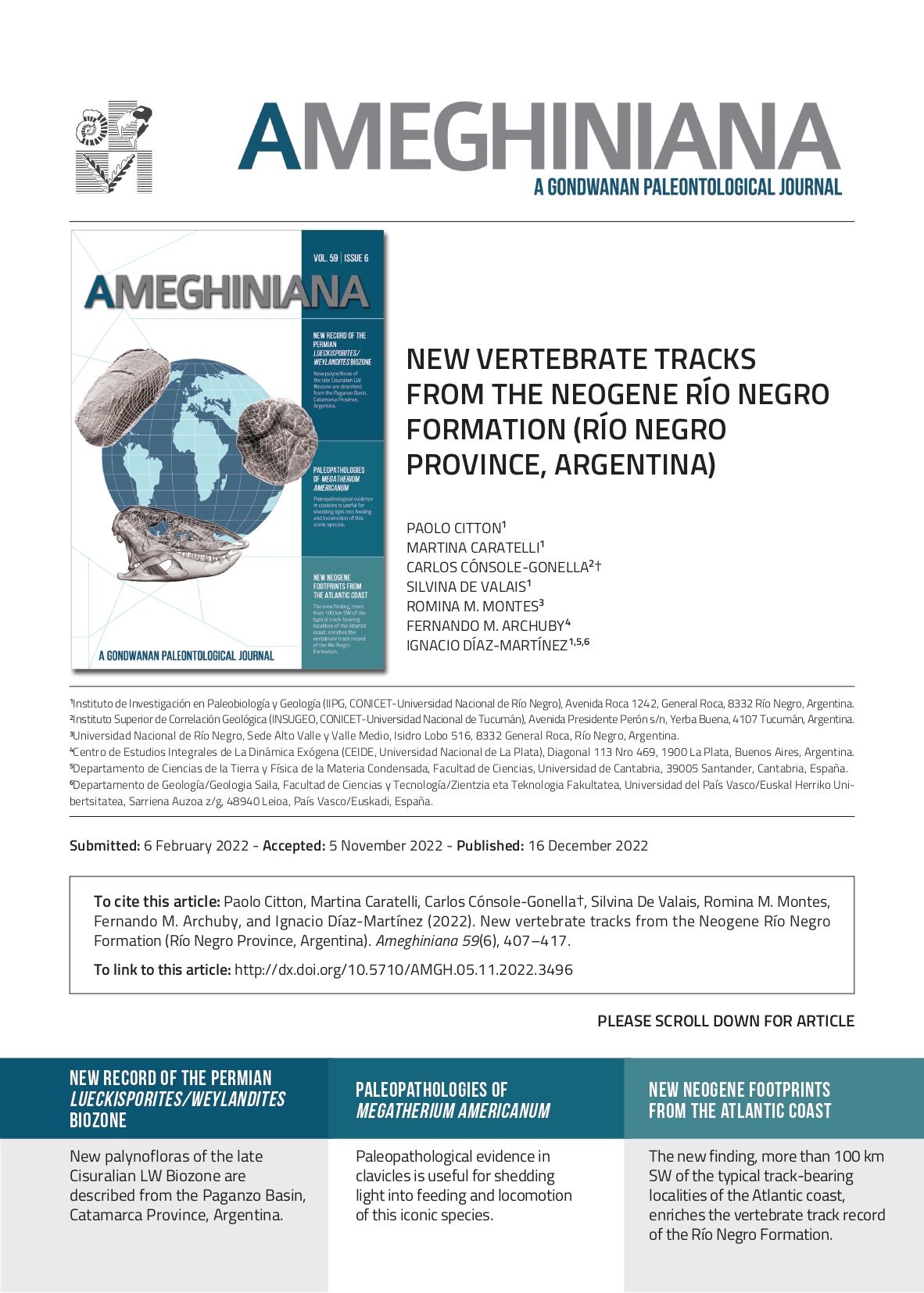NEW VERTEBRATE TRACKS FROM THE NEOGENE RÍO NEGRO FORMATION (RÍO NEGRO PROVINCE, ARGENTINA)
DOI:
https://doi.org/10.5710/AMGH.05.11.2022.3496Keywords:
Vertebrate tracks, Río Negro Formation, Neogene, Atlantic shoreline, Gruipeda, Porcellusignum, Mammals, BirdsAbstract
New tetrapod footprints were recently found close to Pozo Salado, on the Atlantic shoreline west of Punta Mejillón area (Río Negro Province, Argentina). Footprints are preserved on the top-surface of a fine-grained sandstone included in a stratigraphic section belonging to the Neogene Río Negro Formation. The tracksite displays abundant footprints but a relatively low ichno-diversity. Both footprint morphologies and extra-morphologies suggest that the surface and subsurface remained compliant to producers of different size-classes during a relatively long time of exposure and trampling. Footprints sufficiently detailed to allow an ichnotaxonomic allocation were classified as Gruipeda maxima, Gruipeda cf. maxima, cf. Porcellusignum isp., and indeterminate Eutardigrada tracks, related to gruiform/ciconiiform birds, hydrochoerid rodents and ground sloths, respectively. The new finding, more than 100 km SW of the typical track-bearing localities of the Atlantic coast, enriches the vertebrate track record from the Río Negro Formation and adds a newly reported ichnospecies.

Additional Files
Published
Issue
Section
License
Authors publishing in Ameghiniana have the option of making their article freely available online. Authors opting for the Open Access must pay a fee of $300 (US dollars) to cover article-processing costs and to ensure the article is made open access. Please contact the Production Team after the acceptance of your manuscript if you are interested in making your article Open Access. This option implies by default a license Creative Commons Attribution Non-Commercial-NoDerivs License (CC BY NC ND). If your funding institution requires a different licensing option please communicate this to the Production Team after the acceptance of your manusctipt.










